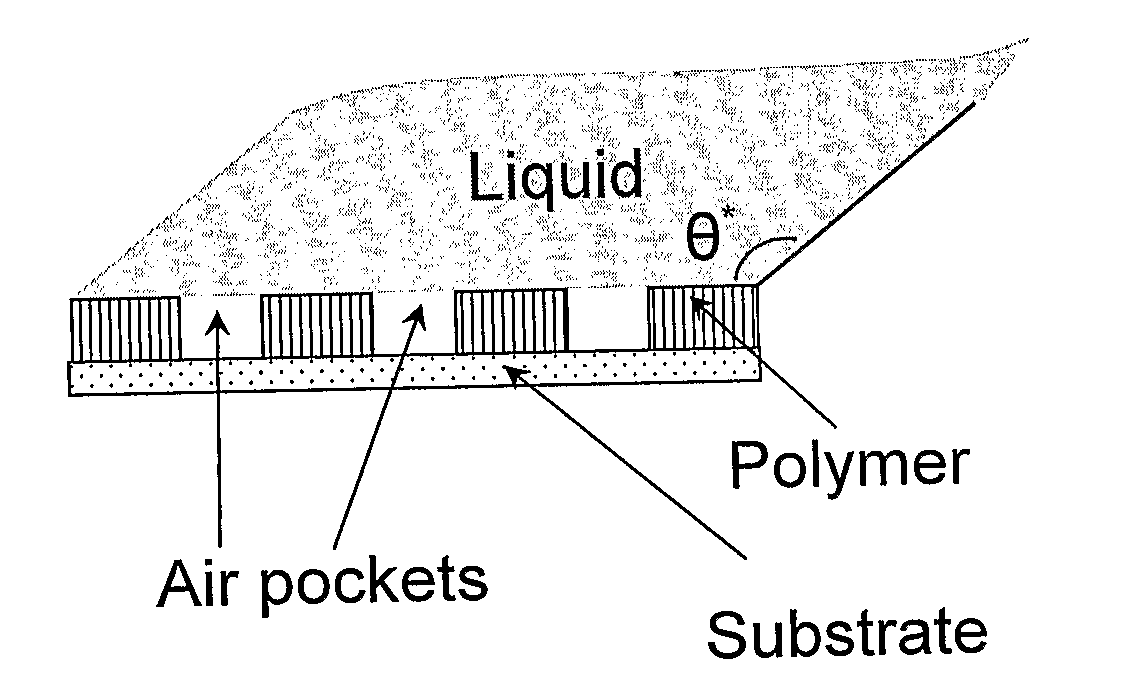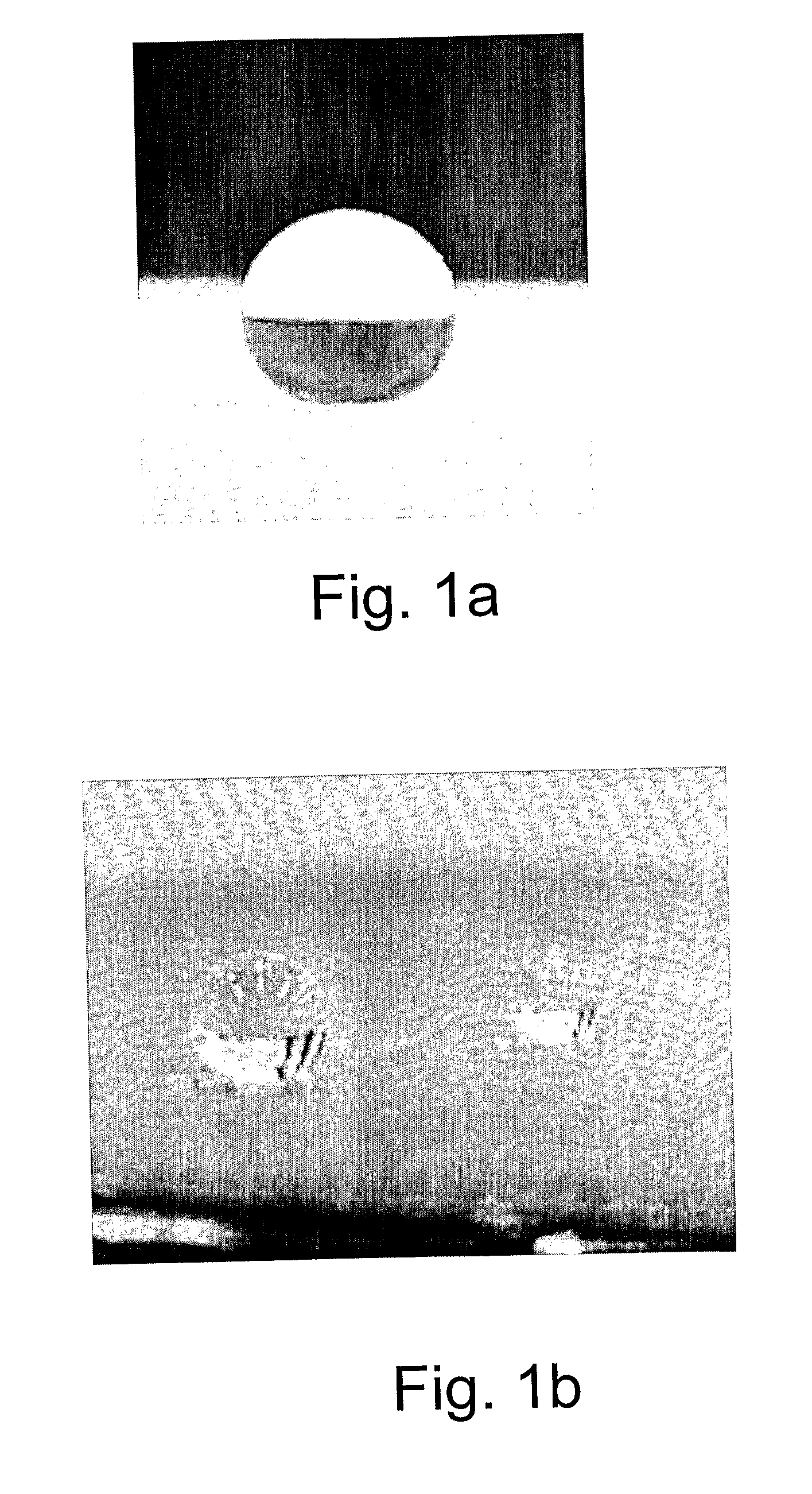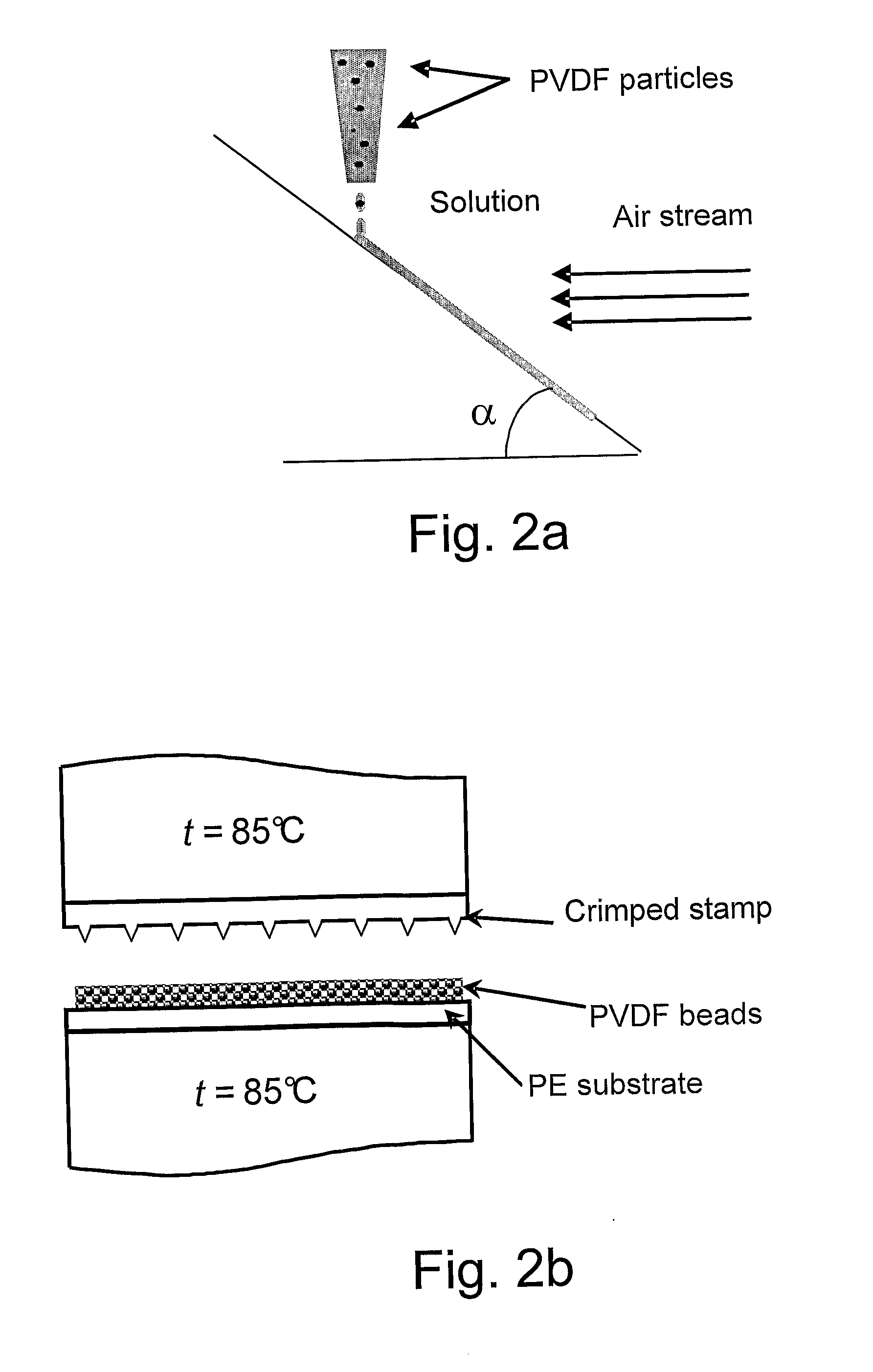Superhydrophobic nanotextured polymer and metal surfaces
- Summary
- Abstract
- Description
- Claims
- Application Information
AI Technical Summary
Benefits of technology
Problems solved by technology
Method used
Image
Examples
example 1
[0027]Highly hydrophobic polymer surfaces were obtained (FIG. 2a-b). Tilted base substrates were coated with chlorinated solvents-based solutions comprising polycarbonate and PVDF beads. Polycarbonate is soluble in the chlorinated solvents, whereas PVDF is not, thus a suspension was formed and dripped on the substrates as depicted in FIG. 2a, e.g. quartz glass substrate, and dried with a room temperature air current. The structure of the dry film studied by means of scanning electron microscopy (SEM) shows interconnected colloidal arrays (ICA), such as presented in FIG. 3a-b. These arrays are micro-scaled aggregates consisting of PVDF particles embedded in PC that filled the porosity between PVDF beads. The most frequent size of these aggregates was determined as 3-10 μm. The aggregates incorporate 104-106 PVDF nanoparticles. The relief displayed in FIG. 3 is mentioned further as Relief A.
[0028]At the first stage solutions containing 2-5 wt % of PC dissolved in chloroform were prepa...
example 2
[0029]A layer of PVDF beads in powder form has been spread at the surface of the low density polyethylene (PE) substrate (see FIG. 2b). Then the sandwich has been exposed to hot pressing with a randomly riffled stamp. The PE has been softened under the pressing and traps single PVDF particles (which are still solid under the pressing temperature) and globular aggregates were formed comprising PVDF beads. The aggregates, composed of nano-scaled beads frozen in the PE matrix, formed highly developed interface photographed in FIG. 4a-b. This random pseudo-fractal surface is mentioned below as Relief B. Pressed stamp indentations form “channels” important for increasing the hydrophobicity. Hot pressing was carried out under t=85° C. The characteristic distance between indentations of the riffled stamp was 100 μm, the depth of the indentations was 20 μm.
example 3
[0030]At the next stage, Reliefs A and B were coated with 360 Å gold films by a sputtering procedure in argon atmosphere. Then double distilled water droplets were dripped carefully on the coated templates. The volume of the droplets was 2-5 μl. Apparent contact angles are summarized in Table 1.
TABLE 1ACA values of the textured surfacesGold coatedGold coatedRelief Arelief ARelief Brelief BMeasured95 ± 5°95 ± 5°160 ± 5°150 ± 5°ACA
PUM
| Property | Measurement | Unit |
|---|---|---|
| Length | aaaaa | aaaaa |
| Length | aaaaa | aaaaa |
| Length | aaaaa | aaaaa |
Abstract
Description
Claims
Application Information
 Login to View More
Login to View More - R&D
- Intellectual Property
- Life Sciences
- Materials
- Tech Scout
- Unparalleled Data Quality
- Higher Quality Content
- 60% Fewer Hallucinations
Browse by: Latest US Patents, China's latest patents, Technical Efficacy Thesaurus, Application Domain, Technology Topic, Popular Technical Reports.
© 2025 PatSnap. All rights reserved.Legal|Privacy policy|Modern Slavery Act Transparency Statement|Sitemap|About US| Contact US: help@patsnap.com



